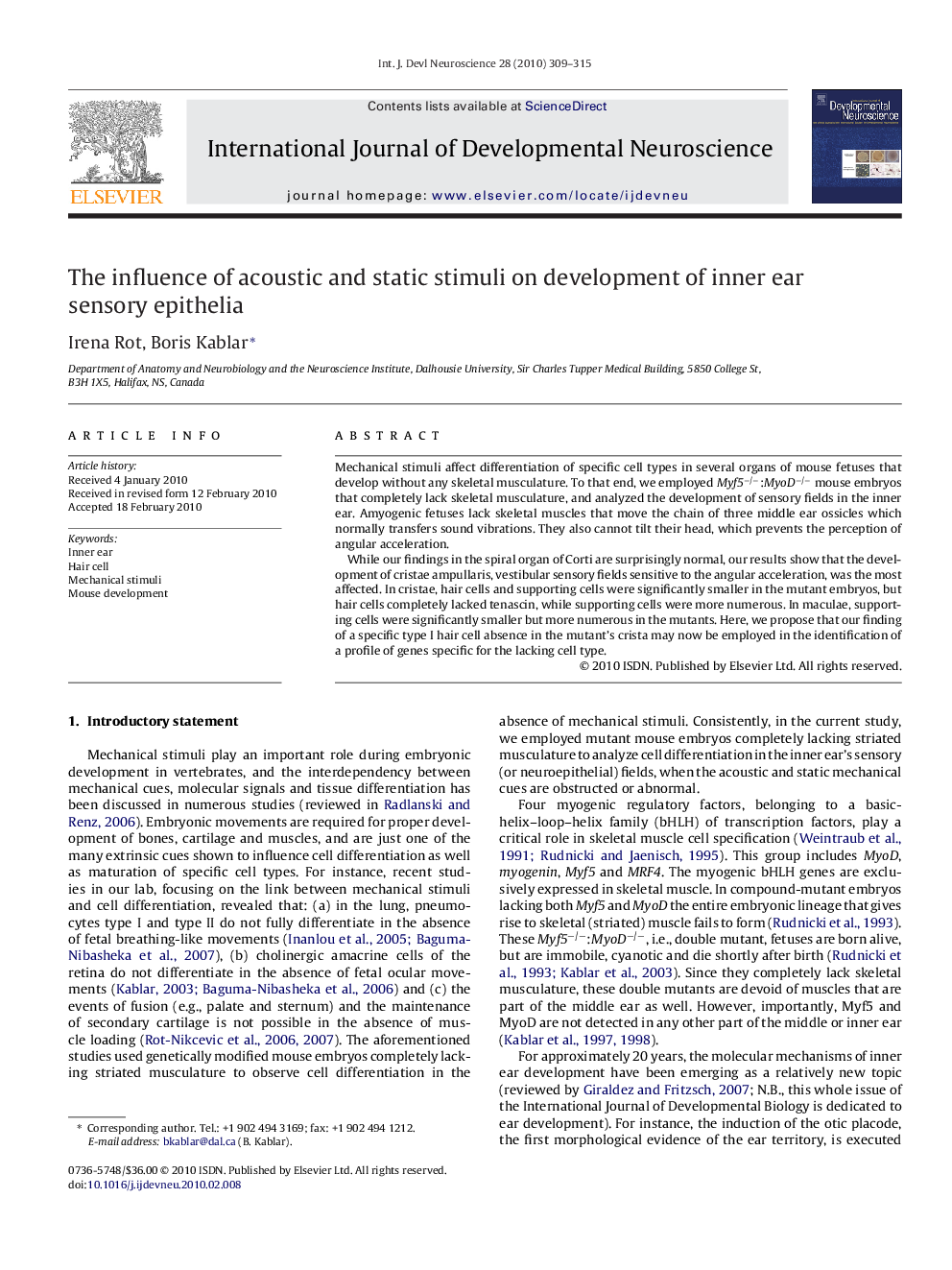| Article ID | Journal | Published Year | Pages | File Type |
|---|---|---|---|---|
| 2786752 | International Journal of Developmental Neuroscience | 2010 | 7 Pages |
Mechanical stimuli affect differentiation of specific cell types in several organs of mouse fetuses that develop without any skeletal musculature. To that end, we employed Myf5−/−:MyoD−/− mouse embryos that completely lack skeletal musculature, and analyzed the development of sensory fields in the inner ear. Amyogenic fetuses lack skeletal muscles that move the chain of three middle ear ossicles which normally transfers sound vibrations. They also cannot tilt their head, which prevents the perception of angular acceleration.While our findings in the spiral organ of Corti are surprisingly normal, our results show that the development of cristae ampullaris, vestibular sensory fields sensitive to the angular acceleration, was the most affected. In cristae, hair cells and supporting cells were significantly smaller in the mutant embryos, but hair cells completely lacked tenascin, while supporting cells were more numerous. In maculae, supporting cells were significantly smaller but more numerous in the mutants. Here, we propose that our finding of a specific type I hair cell absence in the mutant's crista may now be employed in the identification of a profile of genes specific for the lacking cell type.
